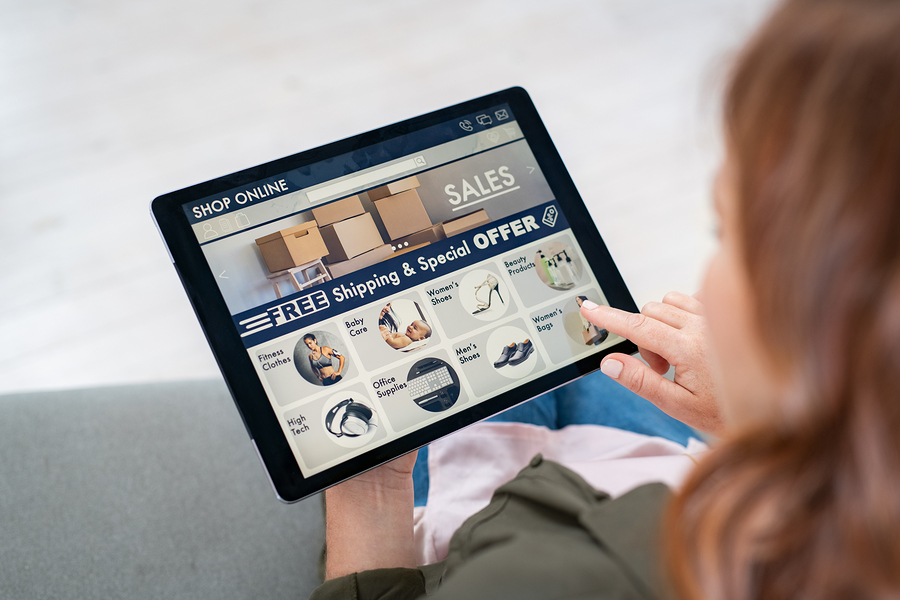E-commerce, short for electronic commerce, is the buying and selling of goods or services over the internet. An e-commerce clothing business allows you to sell clothing and accessories online, directly to customers through your own website or through a marketplace like Amazon or Etsy.
This type of business is becoming increasingly popular as more and more consumers shop online. In this guide, we will discuss how to start your own eCommerce clothing business, from developing your concept to launching your website.
Developing Your Concept
Table of Contents
The first step in starting an eCommerce clothing business is to develop your concept and niche. This includes identifying what kind of clothing you want to sell, and who your target audience is.
- Clothing Niche – Consider the type of clothing you want to sell. Will it be geared toward a specific demographic such as children, women, or men? Will it be focused on a specific fashion style or trend? Will it be eco-friendly or sustainable clothing? Narrowing down your niche will help you to define your target audience and make it easier to market and advertise your products.
- Target Audience – Identify who your target audience is and consider what kind of clothing they would be interested in buying. This includes factors such as age, gender, lifestyle, and location. Understanding your target audience will help you to tailor your product offerings and marketing efforts to better reach and engage with your potential customers.
Getting Started
Once you have a clear concept and target audience, it’s time to start building your business. here are some of the steps you will most likely need to follow in your journey.
- Business Plan – Creating a detailed business plan is essential for outlining your goals, strategies, and financial projections for your business. It will also be helpful when seeking funding from investors or a loan from a bank.
- Product sourcing – Sourcing your clothing is an important step in building your business. You have several options for sourcing your products, including:
- Manufacturing your own clothing line
- Wholesale purchasing from manufacturers or suppliers
- Drop shipping where you purchase products only after a customer has placed an order and it is shipped directly to them.
- Branding – Developing a unique brand identity is essential for standing out in the crowded eCommerce market. This includes creating a logo, tagline, and overall aesthetic that represents your business and resonates with your target audience.
- Building Your Website – Your website is the foundation of your eCommerce business and it’s important to choose the right platform that suits your needs. This can include platforms like Shopify, BigCommerce or Magento and make sure to have a user-friendly interface, easy-to-use navigation, and secure payment options.
- Marketing – Developing a solid marketing plan is critical for driving traffic to your website and increasing sales. This can include creating engaging content, social media advertising, email marketing, and influencer marketing.
Tips for Starting an eCommerce Clothing Business
- Keep An Eye On Trends – Stay up-to-date on the latest fashion trends and try to incorporate them into your product offerings. This can help to keep your business relevant and attract new customers.
- Provide Great Customer Service – Providing excellent customer service is essential for building customer loyalty and driving repeat business. This includes responding promptly to customer inquiries, providing detailed product information, and offering a hassle-free return policy.
- Optimize For Mobile – With more and more consumers shopping on mobile devices, it’s important to optimize your website for mobile to ensure that it loads quickly and is easy to navigate on a smaller screen.
- Invest In Quality Photography – High-quality product photos are essential for showcasing your clothing and accessories on your website. Invest in professional photography or invest in a high-quality camera and learn how to take good photos of your own to make your products stand out.
- Use Social Media – Social media is a powerful tool for promoting your business and connecting with your target audience. Use platforms like Instagram, Facebook, and Pinterest to showcase your products, engage with your followers, and drive traffic to your website.
- Network With Influencers – Influencer marketing is a great way to reach a larger audience and build trust with your target customers. Network with influencers in your niche and collaborate with them to promote your products and increase brand awareness.
- Continuously Optimize And Improve – Starting a small online clothing business is an ongoing process, and it’s important to continuously optimize and improve your website, product offerings, marketing, and customer service. Collect customer feedback and make data-driven decisions to improve your business.
Starting an eCommerce clothing business can be a rewarding and profitable venture, but it does require hard work, dedication, and a solid plan. By developing a clear concept, niche, and target audience, building a professional website, and implementing effective marketing strategies, you can successfully launch and grow your eCommerce clothing business. Keep in mind to continuously evaluate and improve your business to achieve success. Remember that this is a process and it takes time and patience to see results, but with the right approach, you can build a successful eCommerce clothing business.
Image Source: BigStockPhoto.com (Licensed)
Site Disclaimer
The Content in this post and on this site is for informational and entertainment purposes only. You should not construe any such information or other material as legal, tax, investment, financial, or other advice. Nothing contained on our Site constitutes a solicitation, recommendation, endorsement, or offer by HII or any third party service provider to buy or sell any securities or other financial instruments.
Nothing in this post or on this site constitutes professional and/or financial advice. You alone assume the sole responsibility of evaluating the merits and risks associated with the use of any information or other content in this post or on this site.
You recognize that when making investments, an investor may get back less than the amount invested. Information on past performance, where given, is not necessarily a guide to future performance.
Related Categories: Work, Reviews







